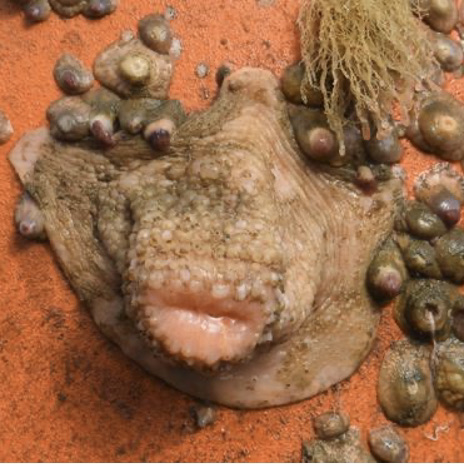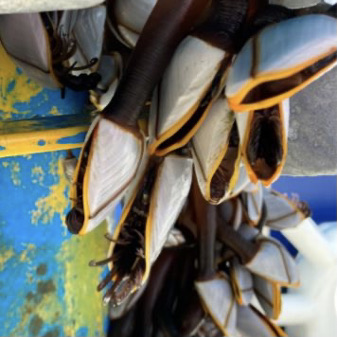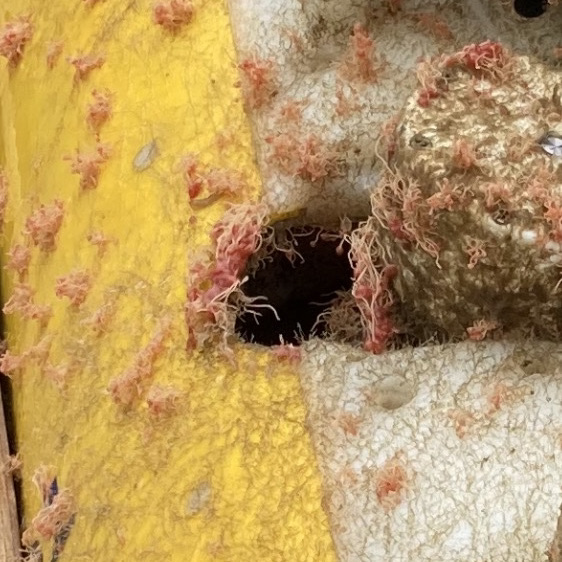
Marine life making homes on buoys

Unknown creature on the sphere. Photo: Andrew Reed © WHOI (Later identified as the anemone Hormathia nodosa).

“This is a load of barnacles!” Character on SpongeBob. Photo: Irene Duran © WHOI (Gooseneck Barnacles – Gastro obscura)

Orange hair-like structures. Photo: Irene Duran © WHOI (Later identified as colonies of the hydroid Ectopleura crocea).
The Northeast US Shelf is a biodiverse area that leads to some fascinating meetings with nature. The Pioneer Array’s mooring platforms on the shelf provide a solid structure that becomes home for many marine species like barnacles, mussels, and scallops. I never knew what barnacles actually looked like until I saw them on our buoys. They are much creepier than what was illustrated on SpongeBob SquarePants (one of my favorite childhood shows). Barnacles look more like the face huggers from the Alien movies. Again, creepy, but very cool. Sometimes we also get surprise appearances from starfish and the unknown creature in this post!
After each recovery, it is necessary to clean off all of the equipment that has been in the water for at least six months. I have a lot of fun power washing, it’s so satisfying! I love it. Barnacles are the hardest creatures to remove, however, power washing and scraping doesn’t always work. The compound they create to attach themselves is stronger than crazy glue. Also, orange hair-like structures that grow on our components are difficult to remove, and, honestly, they look a little appetizing. They might be good on a salad? Tempting, but I don’t think I want to find out.
So far, my favorite encounter with animals was on Pioneer 16; an octopus came up with one of our anchors. It was so cute and teeny! It bit one of our team members. The octopus was at the same location where another octopus had ridden up with the Pioneer equipment the previous year. Don’t worry, we kindly returned it to the ocean. I look forward to seeing what might be inhabiting the moorings when we recover them in the fall.
Written by Irene Duran, Instrument Documentation and Operations
